Vegetables to plant in December: 12 crops to sow and grow this month
Try the best vegetables to plant in December, including super-hot chillies, elephant garlic, purple asparagus and sea kale
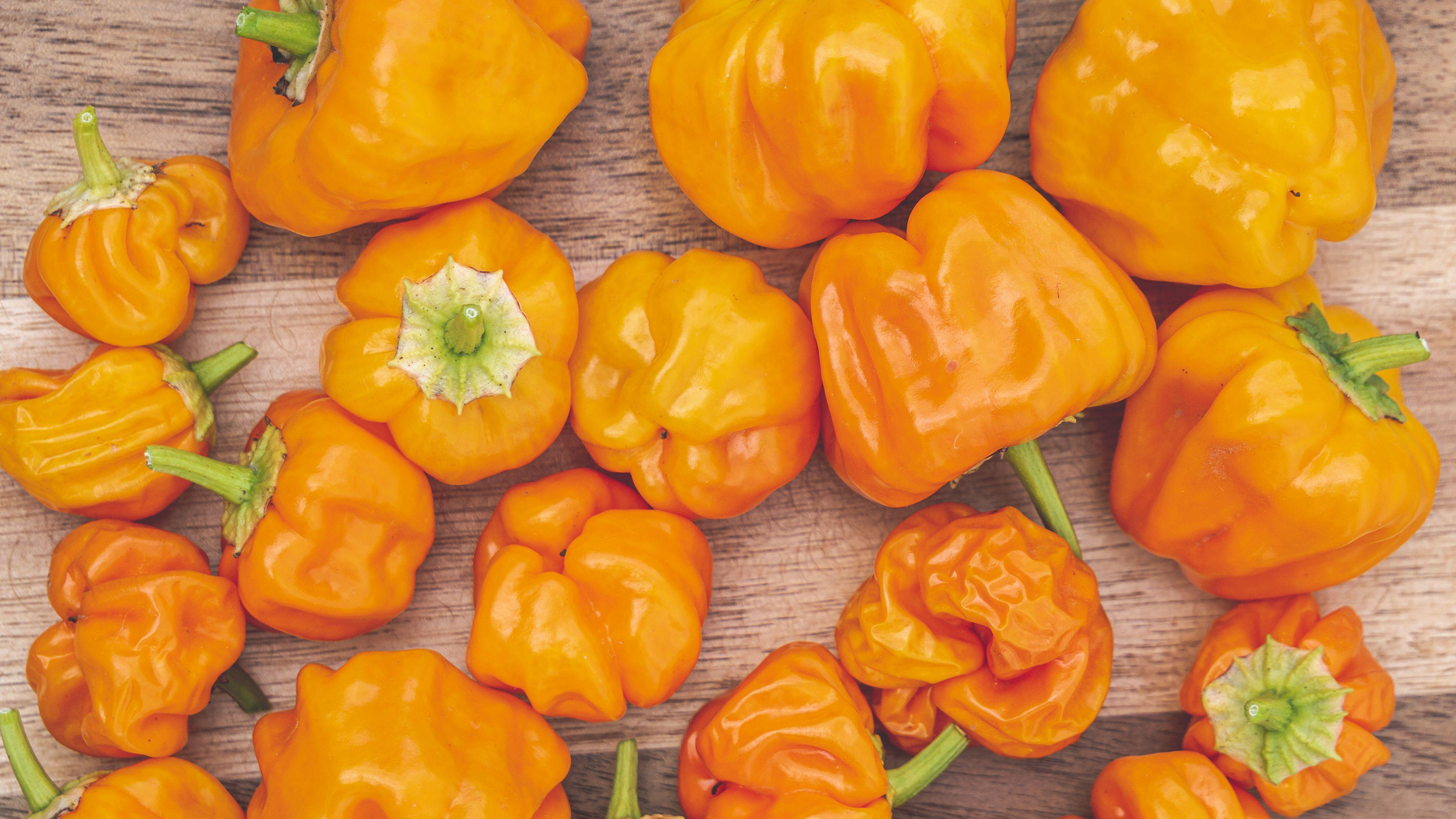

Maybe you were thinking there aren’t that many vegetables to plant in December? Well, you’d be amazed how many crops benefit from winter sowing, whether to make the most of the extra weeks on the plot or under glass, or to improve the flavor or vitality of the veggies you grow. Super-hot chillies use the extra time to develop tongue-tingling fruits – whilst kales develop tender-tasting leaves in the cool, crisp air. Even on the shortest day (21st December), there are planting traditions attached to growing garlic that can help ensure the tastiest returns at harvest time.
Unheated greenhouses and cold frames give you the perfect setting for maintaining balance, ventilation and protection for fledgling plants. For those crops that are a little bit more vulnerable to the cold, heated propagators can help with germination and early seedling health. You can also make more of the light with the help of grow lamps – and even grow some crops without any light at all. This is such an exciting time as we look ahead to the new vegetable planting calendar year, the longer days and the future gardening possibilities.
We’ve compiled the must-grow veggies you need to focus on during the winter weeks. From pink oyster mushrooms and red hot chilli peppers to undercover treats that provide quick nourishment and variety, our round-up of vegetables to grow will keep you stocked up in winter warmers for months to come.
12 vegetables to plant in December for months of tasty and nutritious treats
If you’re keen to kickstart another year of healthy, tasty crop-growing in the best possible way, a few early sowings and plantings will put you in a very strong position for when spring arrives. From gargantuan garlic to teensy clumps of cress, there’s plenty here to please your palates.
Enjoyable and inventive kitchen garden ideas such as sea kale and pink oyster mushrooms can be found even when daylight seems low. And if natural light seems non-existent, you can always grab some chicory and find out how easy it is to cultivate exotic chicons! Whether you’re after quick croppers, bulky bulbs or interesting new colors in the coming months, this must-grow guide for December planting is sure to inspire.
1. Red kale
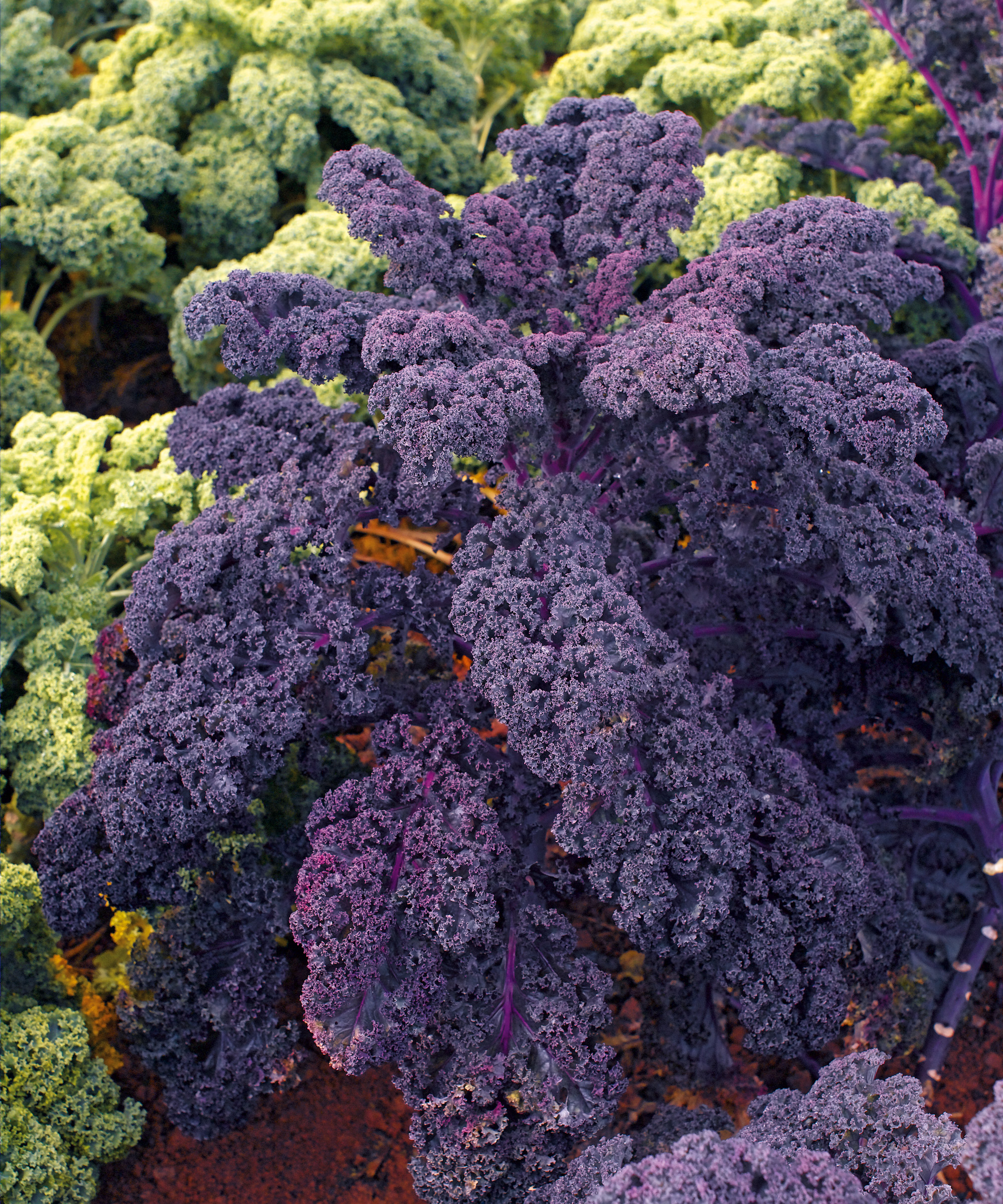
‘Redbor’ from Suttons adds a decorative flourish to beds and borders
When it comes to hearty crops that deliver in all weathers, they don’t come more resilient than kale. These kick-ass cabbage cousins are some of the best low maintenance plants you can grow. Revered as an ornamental superfood, kale is packed with minerals like calcium, folates, and vitamins A, C and K. As well as being amongst the best winter brassicas you can harvest, it is a surprisingly adaptable crop to start off in the latter stages of winter. Red kale is ideal both as mature plants that crop into autumn, and as baby leaves to harvest five weeks from sowing. So for cool pickings that benefit from crisp freshness at both ends of the year, make kale one of your key vegetables to plant in December.
Varieties such as ‘Red Russian’, ‘Redbor’ and ‘Scarlet’ make for tender cold-hardy mini crops as well as enduring garden staples. Leave them to bulk up in cool and shady garden displays, and they will reward you with a glut of luscious leaves come harvest time. Many varieties have been bred for high levels of disease resistance, as well as tolerance to weather extremes. What’s more, if they are exposed to chills, it can improve the taste. As Amateur Gardening’s veg expert Lucy Chamberlain notes, the only thing these plants need if grown to full size is some space. ‘If you intend to grow plants to maturity, grow them 24in (60cm) apart each way. Plant at greater density if you plan to grow outside,’ says Lucy.
Knowing how to grow kale doesn’t involve much ongoing care beyond watering and weeding. When harvesting the leaves, Lucy recommends working from the base up and keeping the central rosette intact for the most prolific crops. Great companion plants for kale include tomatoes, garlic, chives, leeks and tagetes.
- Buy ‘Redbor’ kale in the US: view at Super Seeds
- Buy ‘Redbor’ kale in the UK: view at Thompson & Morgan
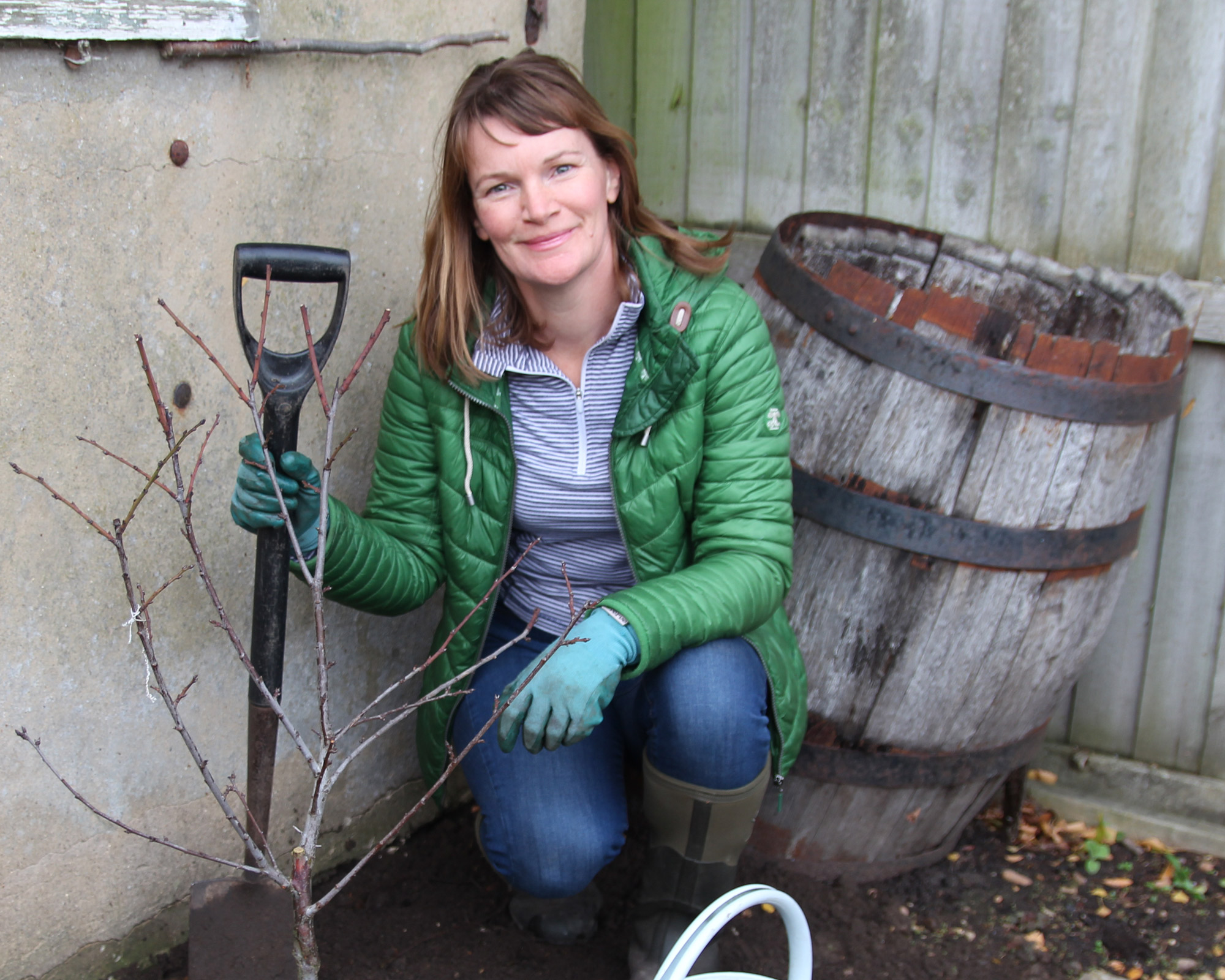
Lucy was a Horticultural Advisor at RHS Wisley for six years. She has been Head Gardener on a 100-acre private Essex estate for seven years, and writes regularly for titles such as The Garden, Gardeners’ World and The Guardian. She's the author of the RHS Step by Step Veg Patch book, and the fruit and vegetable expert for Amateur Gardening magazine, providing readers with invaluable grow-your-own-advice in every issue.
2. Edible dill
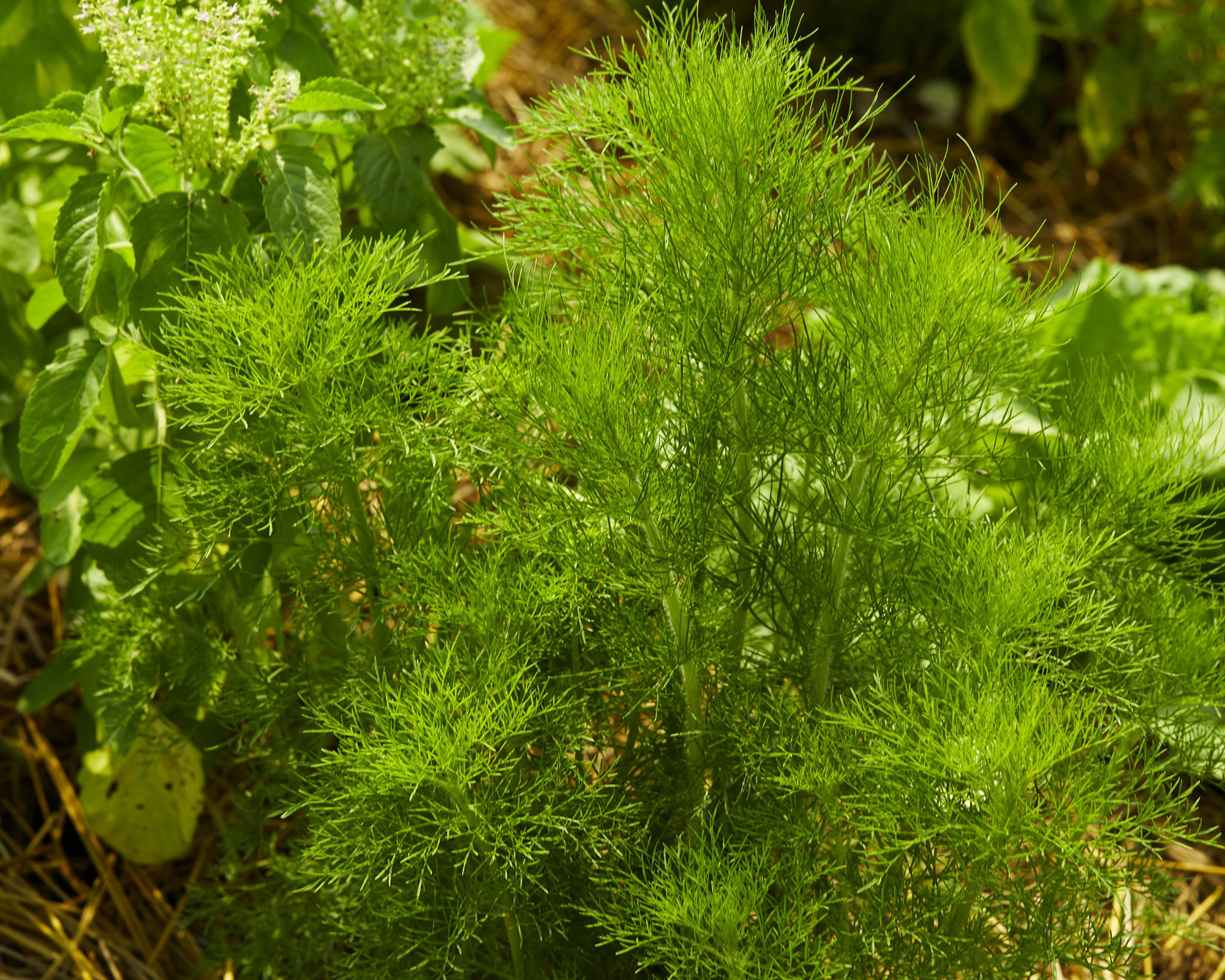
Dill ‘Bouquet’ from Suttons is an excellent compact herb for pots
Delicate, feathery and evocative of aniseed balls, dill is mistakenly believed to be tricky to cultivate. This couldn’t be further from the truth, and the slow, sleepy pace of winter is the perfect time to indulge in early sowings. Packed with antioxidants, magnesium and vitamins, and believed to help reduce cholesterol and the risk of heart disease, dill is often overlooked in favor of the staples like basil and parsley. However, if you want to create a herb garden with real scope, it is well worth squeezing into your winter gardening routine.
When making December planting of dill undercover, you just need to make sure you choose a suitable propagation zone with regulated light and warmth. If you can find a space in your greenhouse, all you need to factor in are a couple of heated propagators and heat mats if you want to grow dill ahead of the pack. While dill is cold-hardy, it germinates best where soil temperatures are kept at around 65˚F. Make sure your developing dill receives at least six hours of sunlight a day and keep the soil slightly acidic, well drained and, above all, moist (not soggy).
As seedlings develop, you can pot dill on in a garden planter alongside rocket, cilantro and chervil. Plant out only once the last risk of frost has passed, or keep indoors. Harvest from eight weeks after sowing, and don’t be afraid of pinching the tips as this can promote bushier growth. Allow a couple to flower, and you can also enjoy the seeds. Try compact ‘Fernleaf’ and dwarf ‘Bouquet’ for containers, and ‘Mammoth’ if you have space and fancy something with more decorative potential.
3. Super-hot chillies
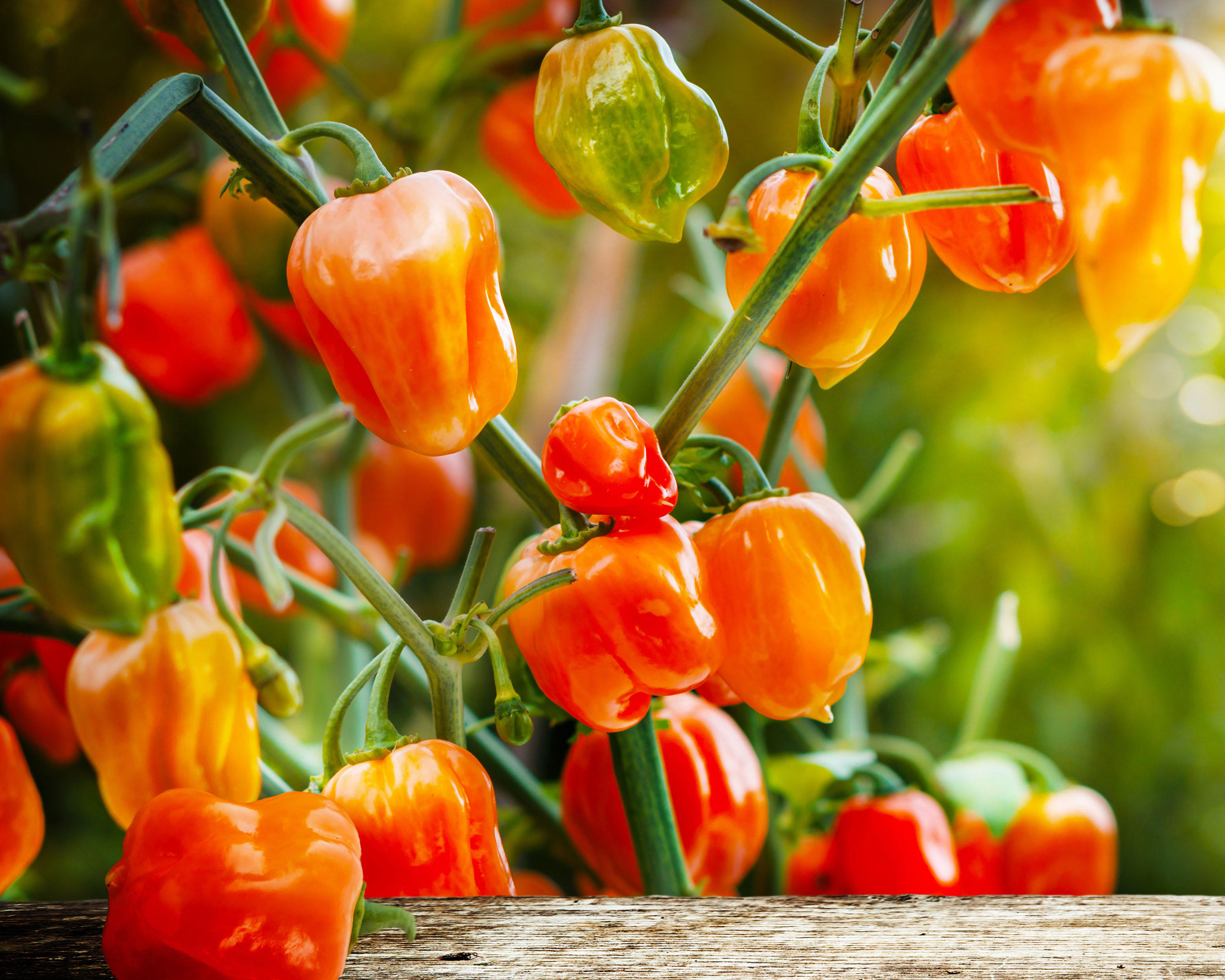
Chilli ‘Orange Habanero’ benefits from an early start in a greenhouse or polytunnel
Some of the most critical vegetables to plant in December are those super-hot chillies designed to get your taste-buds a-tingling. As Chris Bonnett of Gardening Express points out, very hot chillies grow slowly. They need warmth and humidity – and plenty of it – to ripen fully. So the sooner you start off those Carolina Reaper, Trinidad Scorpion and Naga peppers, the better. As anyone who grows chillies will know, indoor sowing is the best way of moderating the conditions these plants crave early on. Starting in December guarantees that those eventual fruits have plenty of time to acquire the atomic levels of heat required.
For clarity, it is the Capsicum chinense varieties that benefit most from these earlier sowings to bring about the most bountiful harvests. (For comparison, C. annuum varieties are best sown a little later.)
‘To get the best results, sow seeds in multi-purpose or seed compost. Keep plants in a heated propagator (set to 77˚F/25˚C or higher) under a growing light until seedlings appear,’ says Chris. Chilli enthusiasts are advised to kickstart their fiery campaigns by growing vegetables in pots and keeping those emerging seedlings as warm as possible with a heated mat or similar. Water just enough to keep the surface of the compost moist and prevent chills below the surface level. Once plants are 6in (15cm) high, you can pot them on.
They can also be planted up in borders and grown in tandem with rosemary, oregano, nasturtiums, dill, parsley, basil, chives, beans and peas. Once they fruit, water sparingly and expose to more sun for crops that really feel the burn. Super-hot chillies reward a long season of care, warmth and a light seaweed feed with unforgettably vibrant fruits that pack a real punch.
4. Wild rocket
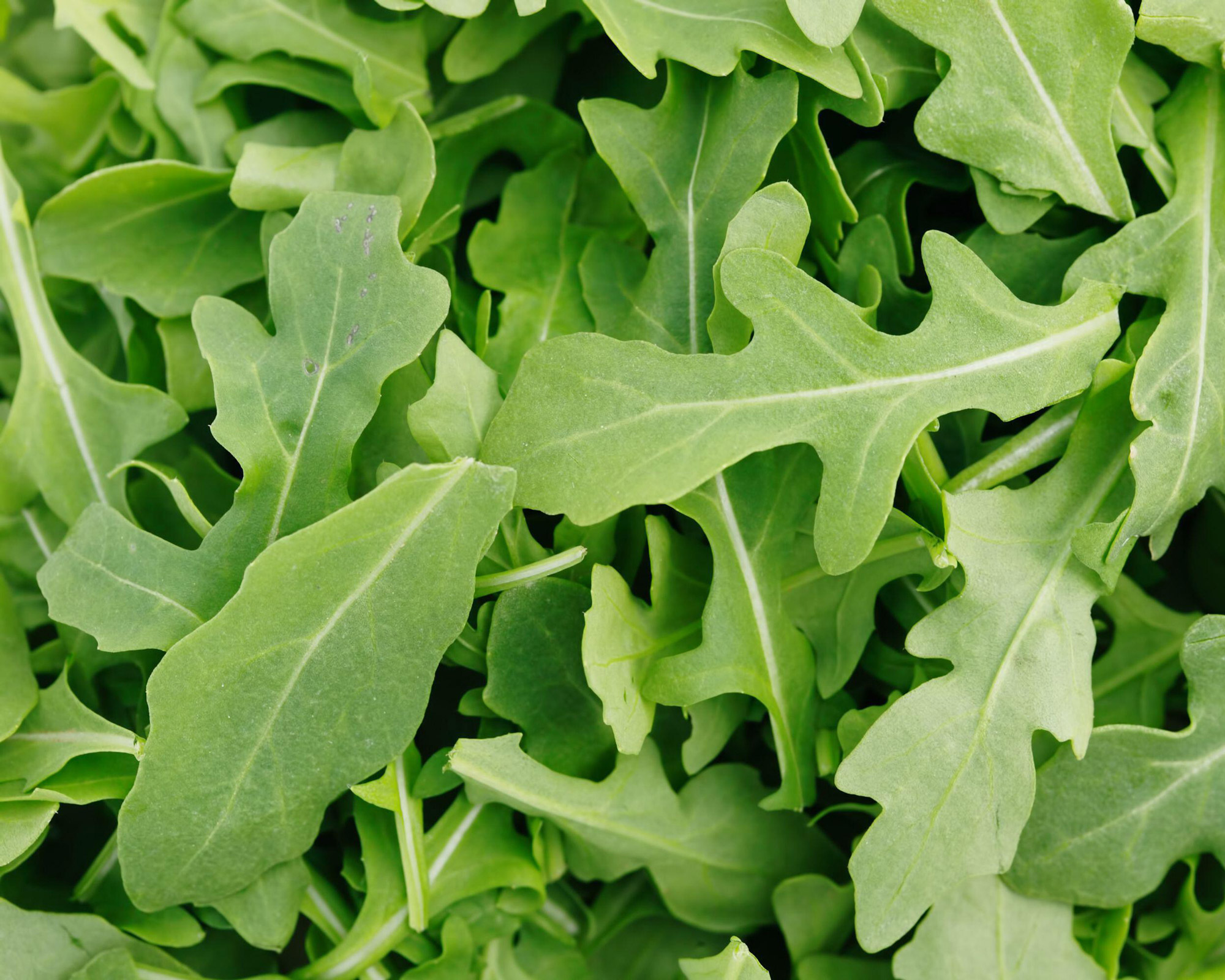
Wild rocket delivers a spicy hit and keeps you fed through winter
Snappy, peppery and resilient, if there’s one leafy plant guaranteed to be the life and soul of the salad bar this winter, it’s wild rocket (arugula). As a cut-and-come-again cropper, it has a short life but makes the most of it and crams in a belly-full of flavor. Our recommendation for December planting is ‘Dragon’s Tongue’, a feisty purple and green rocket that grows well in winter and is loaded with potassium and vitamin C.
If you are looking for something simple to plant in a greenhouse and you want quick returns to keep you fed in these chilly days, wild rocket delivers – and it doesn’t skimp on heat! Sow batches in an unheated greenhouse or a cloche every two weeks, or keep on a windowsill for bursts of continuous growth. You can grow rocket and other herbs together in pots, and also plant in tandem with spinach, mizuna and mustards. Growing in shallow containers allows you to cultivate clumps in successive harvests, picking a few leaves from each plant when needed.
Fans of companion planting can try growing with onions, chives and garlic, which can all help to intensify the taste. Younger leaves are milder and more delicate, while older leaves will be hotter. You can also eat flower buds and shoots, but pinching them out will prolong cropping.
5. Elephant garlic

Elephant garlic (aka wild leek) has a reputation for developing into monster-sized bulbs
Also called wild leek (Allium ampeloprasum), this garlic develops gargantuan bulbs. As Chris Bonnett notes, if soil is moist and free draining, these chunky croppers appreciate a winter planting. Plant in situ, giving each one an 8in (20cm) space on all sides – or start under a cold frame.
Big on character but gentle on the tongue, elephant garlic is unfussy about wet winters – as long as you avoid waterlogging. If your soil holds water, add sand to the planting hole and top with fine compost to assist with drainage and keep your elephants happy. Garlic benefits from this period of dormancy, and traditionally gardeners are encouraged to plant on the shortest day of the year (21 December). And for those who are short on space and looking for small vegetable garden ideas, garlic can even be planted in large tubs or buckets.
The planted clove swells to a monobulb, but plant now for a long season and this will split into more. This garlic grows flower spikes that reach 1.5m tall. When learning how to grow garlic, one good cultivation tip is to eat the stems (scapes) so energy is directed towards developing the bulbs, then lift in June. And don't forget about including companion plants for garlic in your plot – some potatoes and brassicas will help improve the health of your crops and increase your yield.
6. Potted mint
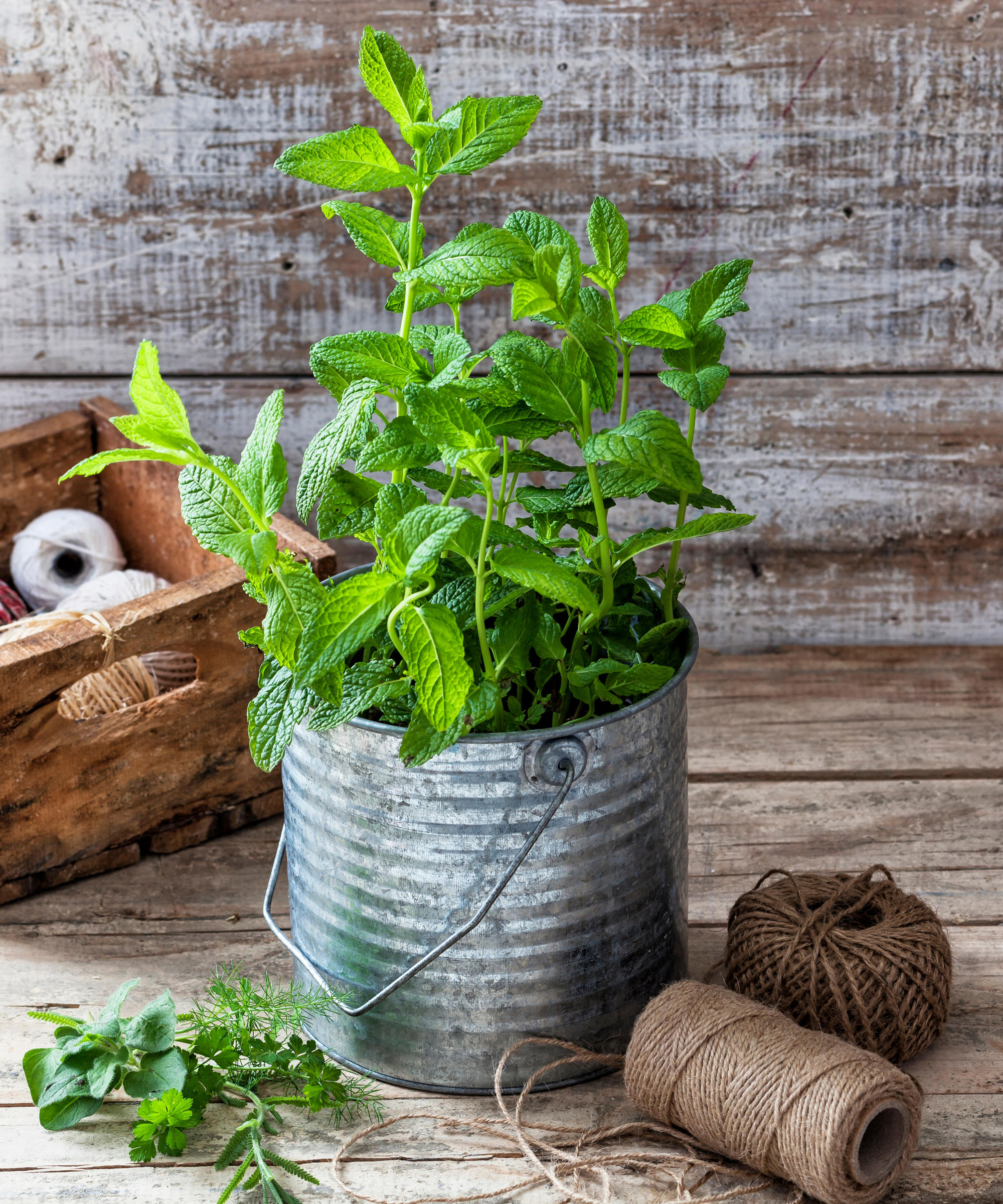
Apple mint is an excellent option for starting in pots now
If you’re after something as varied as it is fast-growing, make some room in your December planting for ‘fruity’ mints. Because mint is one of the best herbs to grow in your garden, you may think it is best in an open space. Yes, mint is a robust, prolific perennial with a reputation for taking over – but at this time of year, you can keep things well contained if you grow mint in good-sized pots kept under glass. Crinkly sweet Moroccan mint (Mentha spicata var. crispa), crispy apple mint (M. suaveolens) and aromatic strawberry mint (M. x piperita) are well suited to container growing, and their hardy, fuzzy-haired leaves make them ideal for winter growing.
As Chris Bonnett explains, mint is perfect for growing in the chilly winter months. You can enjoy the freshest, most fragrant leaves if you have room undercover in a bright, partially shaded greenhouse or mini greenhouse or a light windowsill. Even the most vigorous mints can be kept in check if you use a large pot, tub or a bucket (with holes).
‘Place the plant in a spot that’s in partial shade and keep the soil moist but well-drained,’ says Chris. More established potted mints work well with other container-kept herb garden ideas such as curly parsley and spicy oregano. If contained well, it’s also an ideal companion for carrot and kale as it can deter common pests.
As well as growing from seed, you can also cultivate new mint plants at this time of year by taking root cuttings. This is a quick and easy way of hedging your bets. Cut sections of roots into 1.5in (4cm) lengths, place on gritty compost, cover and water well. Leave in a frost-free spot under glass and then, in spring, grow the young cuttings in their own pots.
7. Chicory and chicons
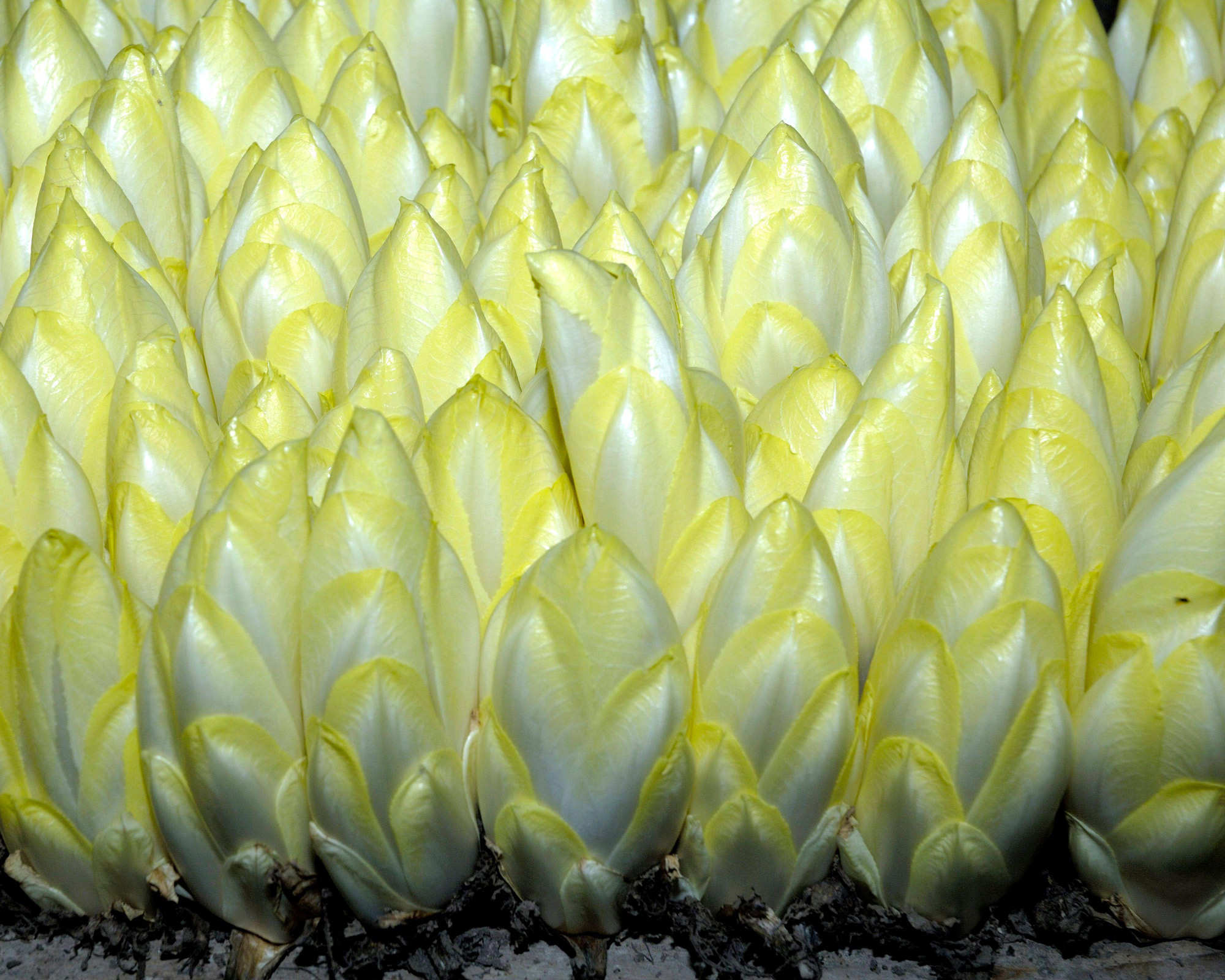
The roots of Chicory ‘Witloof’ can be forced during December and will sprout chicons in a few weeks
This entry into our top vegetables to grow in December offers a generous two-for-one offer! Grow chicory to eat over the coming weeks as a quick leafy treat – or let it develop in the ground and then make a delicacy known as ‘chicons’. Leaving the plant to build up a long tap root, you use that root in December to sprout torpedo-shaped chicons using a technique known as ‘forcing’. Intrigued? You should be!
Sown on heat mats under glass, varieties such as ‘Palla Rossa’ and ‘Sugar Loaf’ make a snappy, flavorsome cut-and-come-again option. As Lucy Chamberlain points out: ‘Just give them ample light by placing them on a bright windowsill or on greenhouse staging.’ These are some of the easiest vegetables to grow in winter. But if you’re feeling like developing a variety for forcing over winter, we recommend ‘Witloof’ or ‘Witloof Zoom’.
Grown in raised garden beds in warmer months, the thick tap roots that develop can be forced the following December. Cover with a forcing jar or bucket, or place roots in sandy compost in large pots and leave in a dark place. This coaxes them into early growth, resulting in chicons; a crisp, creamy delicacy that can be enjoyed raw with citrus fruits or braised in white wine and thyme.
8. Sea kale
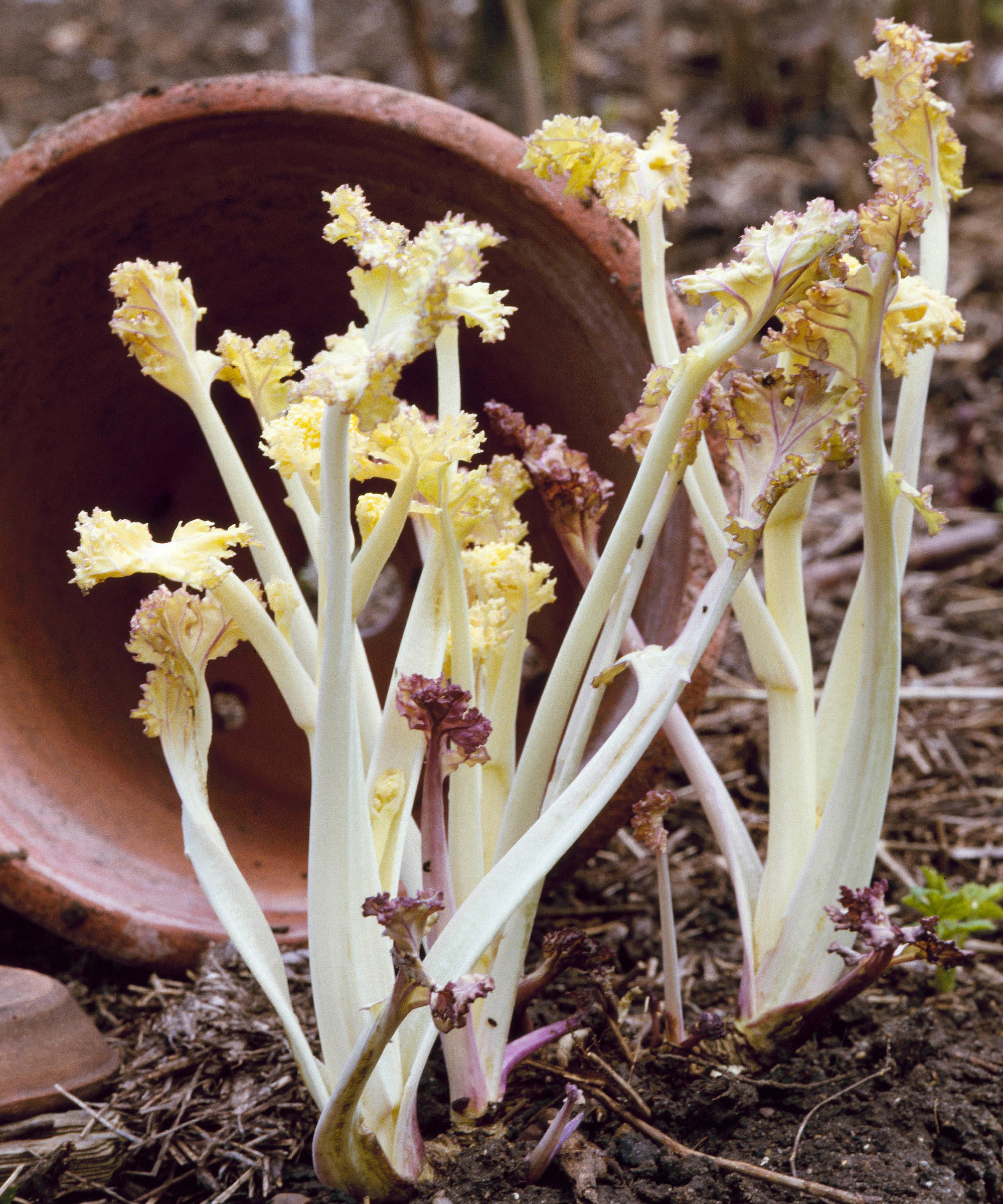
Force sea kale plants over winter, covering with a bucket or forcing pot to get tasty early shoots
You might not fancy the thought of eating ‘sea-colewort’ or ‘scurvy grass’. But trust us, the sea cabbage (or sea kale) is well worth including in your vegetables to grow in December. Sea kale (Crambe maritima) is both a pretty ornamental and a unique edible – and just like chicory, it presents you with the chance to force shoots into early growth from root cuttings for an ocean-soaked delicacy.
If you don’t have sea kale, start some indoors. A variety like ‘Lily White’ is ideal. When they are ready to transplant, grow out in slightly alkaline soil, full sun or partial shade. Like the best coastal plants, it is happy in wind, rain and salt spray, and is drought-tolerant and frost-hardy. Once your plant is a couple of years old, it can be forced in December. These are some of the best winter vegetables to grow and don't require a lot of cultivation.
Pack root cuttings in big containers of sand or soil in the dark, or cover with a black bucket or rhubarb forcer (you can grow rhubarb by forcing in the same way). In five weeks, these maritime marvels will be delicious raw or steamed with butter. Their succulent shoots with purple tips are likened to an oceanic asparagus!
9. Cress
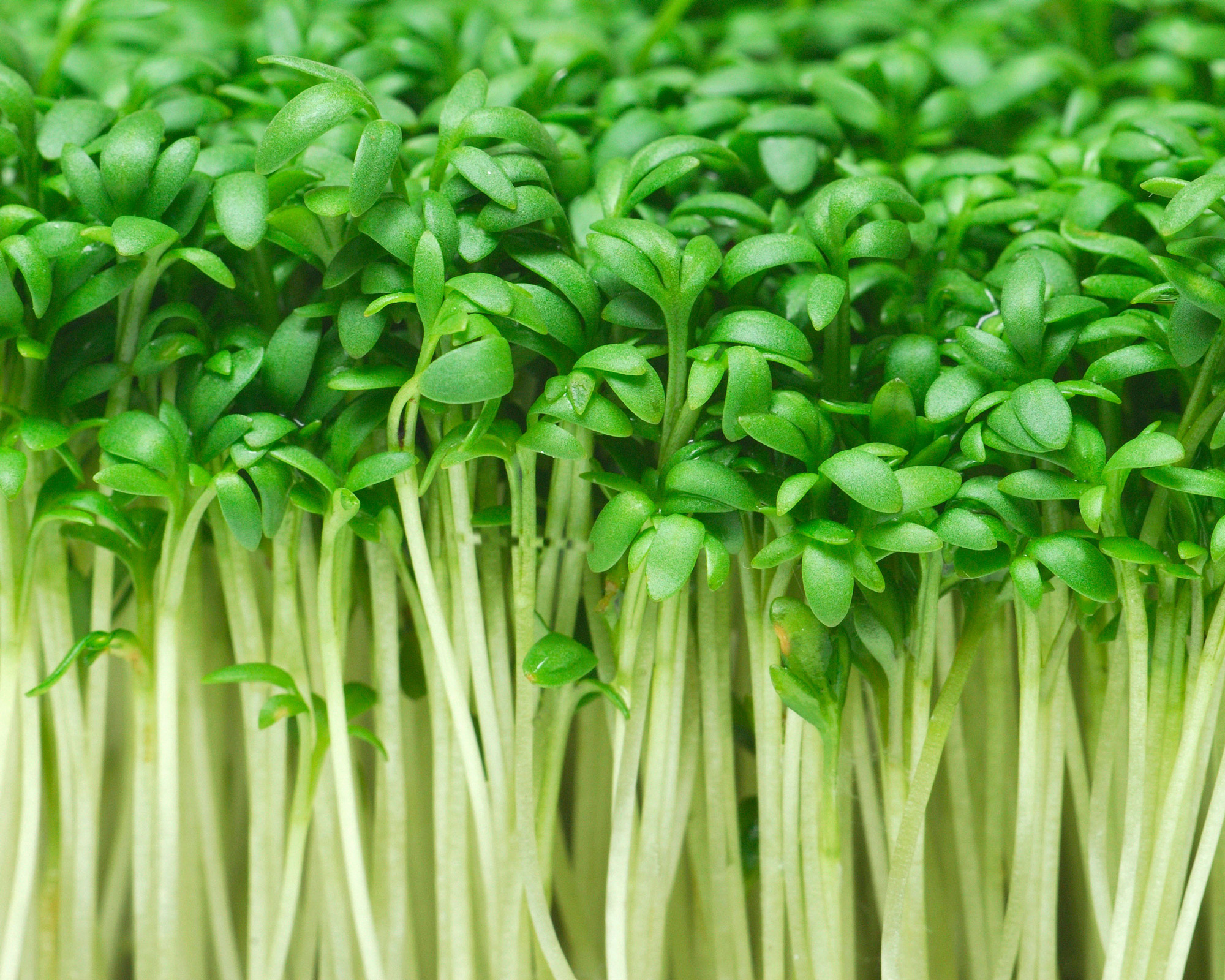
Curled varieties of cress can be grown easily in the smallest spaces
Don’t let anyone tell you cress is boring: it’s a veritable dynamo of vitamins and minerals such as iron and calcium. The best thing about cress (Lepidium sativum) is how easy it is to grow it. As Amateur Gardening's organic veg expert Bob Flowerdew says: ‘You can grow cress in shallow trays with moist paper towels and sit in a windowsill: the perfect accompaniment for all those turkey sandwiches!’
Its distinctive signature is summed up in its other names: peppergrass, pepperwort and pepper cress. You can grow common and watercress varieties, and curled, frilly types. It’s also easy to grow these punchy micro-greens in pots in a greenhouse or cold frame. Just keep cress growing in moist conditions, whether on paper or in seed compost. Boost moisture by covering seeds with cling film: germination takes place in 48 hours, and you can harvest within a week. In much the same way as you might grow bean sprouts, you'll find that cress crops quickly and prolifically.
Because it’s quick-growing, cress is an ideal choice for interplanting with tomato seedlings. It also works well as a companion plant for herbs such as chive and mint, which can help you add another dimension of fresh flavor to your winter salads.
10. Purple asparagus
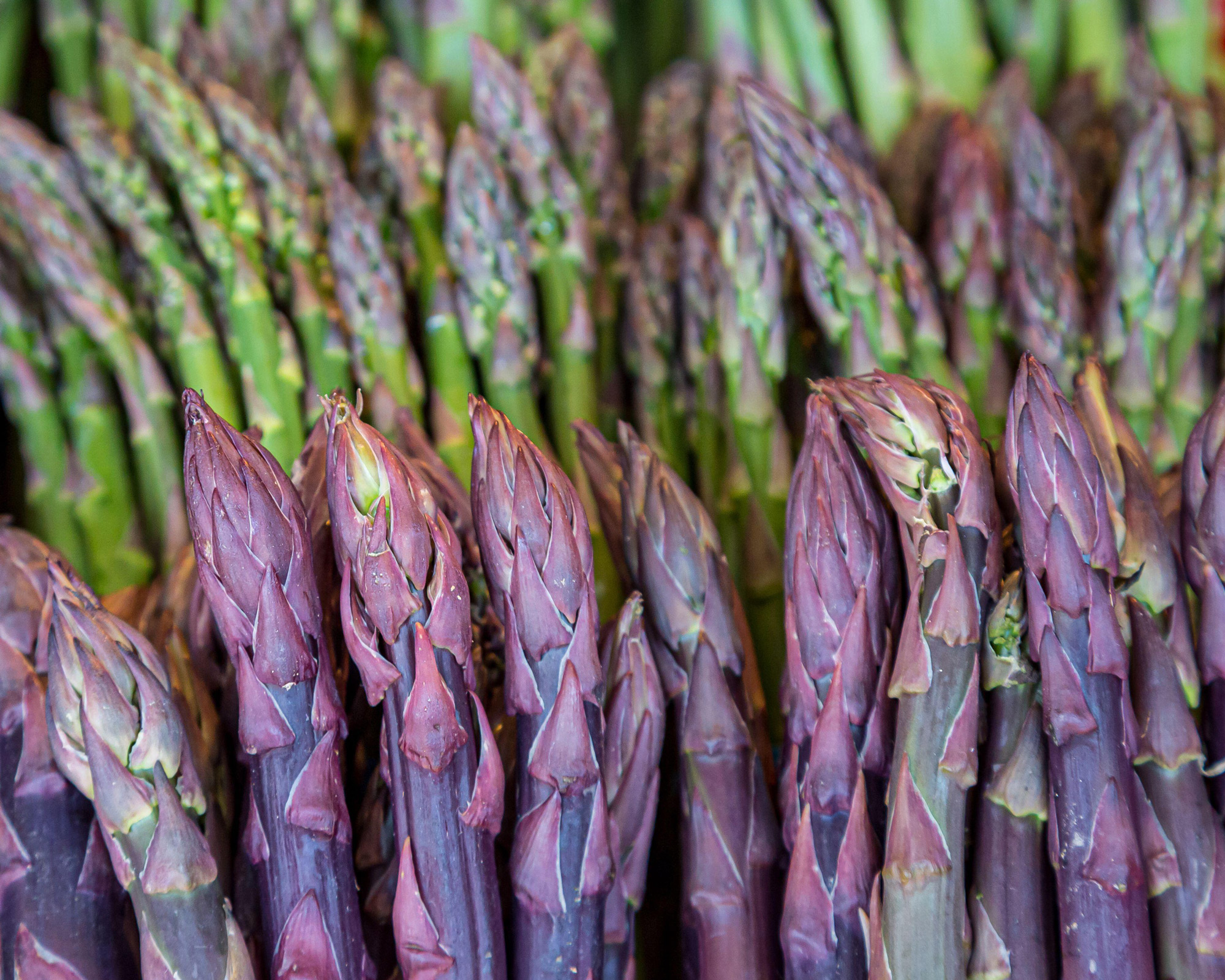
Asparagus ‘Pacific Purple’ is a high-yielding and super-sweet variety, forming tender, thick spears
Homegrown asparagus is a luxury we can all enjoy – and winter is your time to plant crowns in light, well-drained soil. There’s something so indulgent about knowing how to grow asparagus, so we couldn’t resist including them in our rundown of vegetables to grow in December. But while you may picture classic green spears with tinted tips, seared and dripping in butter, there is another option. Purple asparagus is nuttier, and also sweeter, with 20 per cent more sugar in its stalks.
Although the fluffy foliage is usually green, the spears are distinguished by intense violet hues and plumper tips. They are also less fibrous (so more tender) than other types and loaded with antioxidants. Have we convinced you yet? Mouth-watering beauties include: ‘Pacific Purple’, a two-tone crop; crunchy ‘Burgundine’, an easy-going hybrid; and ‘Purple Passion’, cold-hardy with tinted fronds as well as crops.
Planted now during dormancy, they have time to settle before the growing season begins. It takes three years for plants to fully establish, but with space and sunshine, these purple beauties are worth the wait. Just remember after harvesting to give the ground a good mulching and let plants get their beauty sleep, so succulent spears rise year after year.
11. Lamb’s lettuce
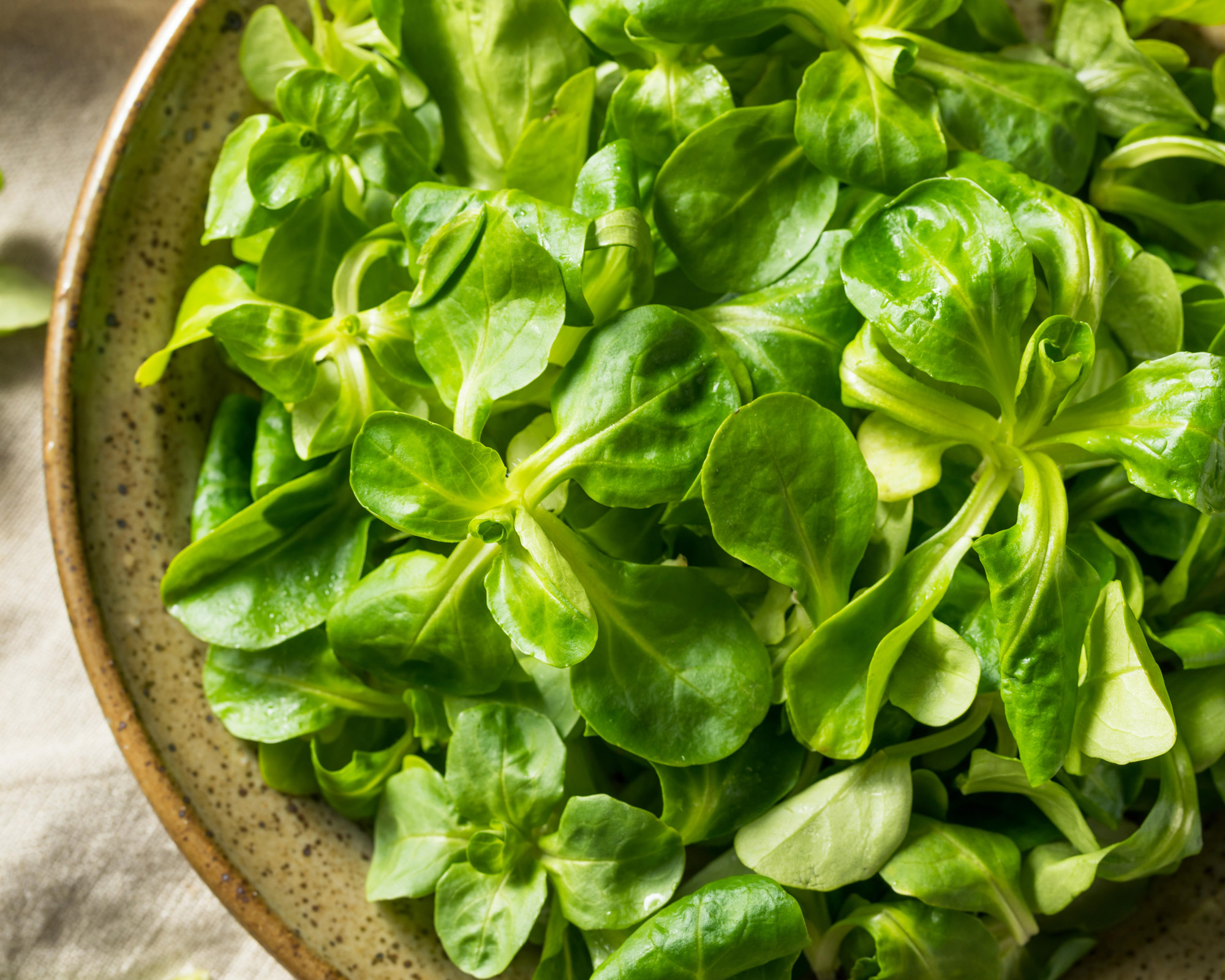
Lamb’s lettuce (aka corn salad) is a fresh nutty leaf crop that is capable of plentiful yields in winter
Rapunzel, Mache, Valentin: the dreamy names associated with these spoon-shaped leaves indicates a delicate crop. But lamb’s lettuce (Valerianella locusta) is a robust winter-hardy stalwart, and one of our top picks for December planting. Also known as corn salad, this fresh nutty leaf crop is capable of high yields – the Louviers types are perfect for winter growing. Its soft, distinctive lobes are a seasonal salad staple, so if you’re growing lettuce in winter it perfectly offsets tangy crops like rocket.
Lamb’s lettuce is great to grow this month, as it prefers cool, moist conditions. As long as there’s sun, it’s fine starting this salad green off in shallow trays in a cold frame or unheated greenhouse; growing in pots under glass or on a windowsill is also possible. Cloches can help speed growth, and remember to water plants well. This is a classic cut-and-come-again (abundant, easy, nutritious), so sow densely and repeat every two weeks. Cut while young and lush, and use sharp scissors so you don’t damage the main stem.
Tasty corn salad varieties to try include: mildew-tolerant ‘Elan’ and ‘Favor’; ‘Vit’ for vigorous baby leaves; and ‘Dark Green Fully Hearted’ (Louviers) for its dainty but frost-hardy oval leaves.
12. Pink oyster mushrooms
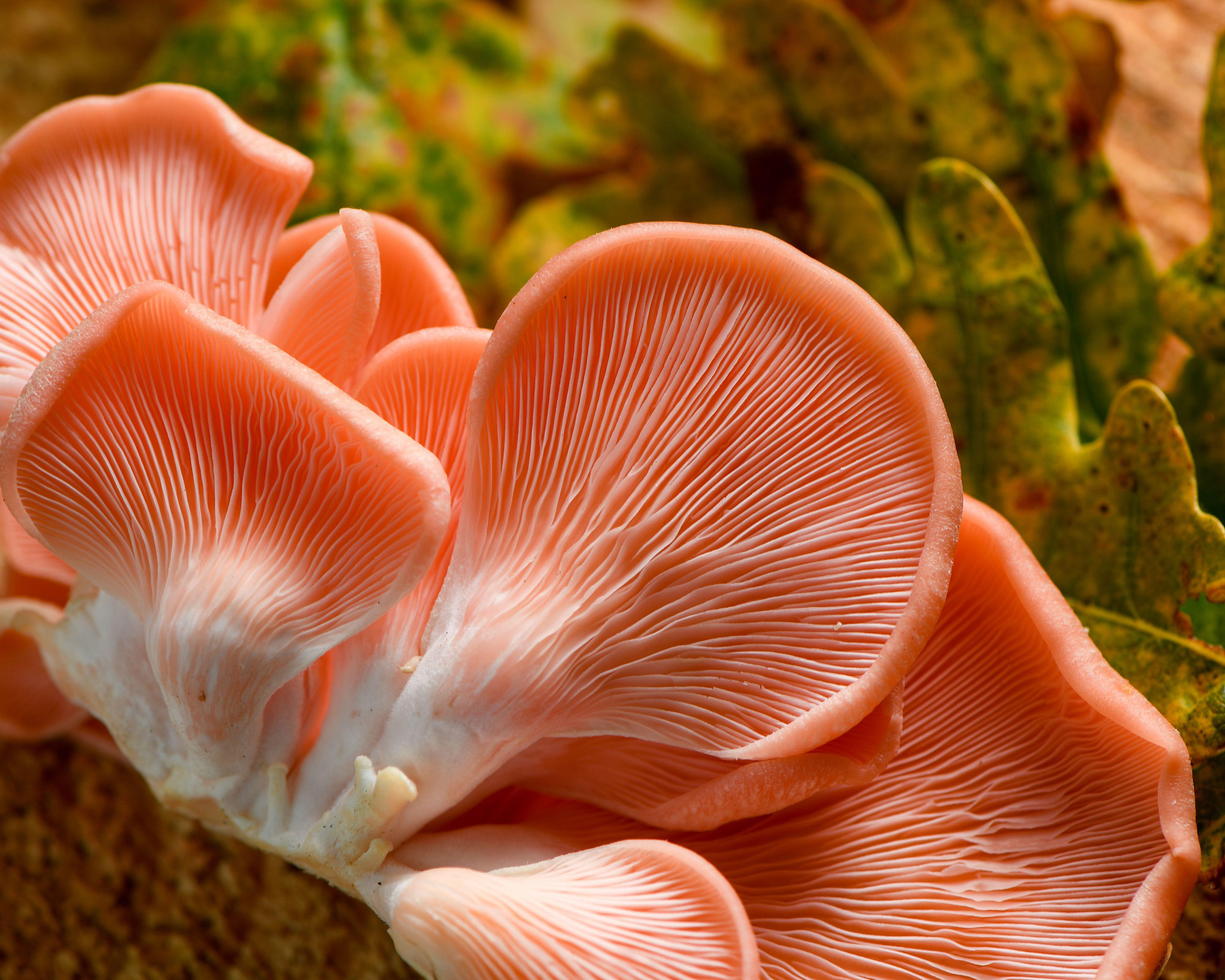
The pink oyster is a lovely option for beginners and enthusiasts alike
Do not adjust your screens, folks: these coral-colored fungi really are as vibrant as they look. Those looking to grow mushrooms would be right in thinking you’re spoiled for choice, but pink oysters are especially well-suited to indoor growing this month. Native to tropical climes, they thrive in temperatures between 64˚F and 80˚F (18˚C and 27˚C). They also grow quickly, producing fruits in three weeks, so they should definitely be on your shortlist of vegetables to grow in December.
These vigorous, heavy-yielding edibles have a firm texture and a meaty quality. Rich in flavor, the pink oyster (Pleurotus djamor) is a striking addition to stir-fries and soups, and can be cut and fried for a convincing bacon substitute. Pink oysters are not fussy and will grow on a range of substrates: straw, sawdust blocks, paper, hardwood and coffee grounds. We recommend straw for your first attempts.
Moisture and humidity are key to success. Oysters are also shade loving so bear this in mind when selecting a spot for cultivation. Spray the walls of the greenhouse or surrounding interior twice a day to help with this. Harvest before caps turn up. Pinks are prolific bloomers, so a plentiful harvest is assured if they are treated well.
What else can I do on the vegetable plot in December?
- Now is the time to protect all potted exotic fruits. Prevent waterlogging by standing outdoor pots on pot feet. If you are growing fruit in pots you should also make sure that your exotics are moved to a frost-free place now. A greenhouse or conservatory is ideal, but a shed or garage will suffice. If your pots are too large to move, cloak them in a tent of horticultural fleece and cap the top with bubble wrap.
- Create bean trenches: if you want to know grow runner beans that crop from July to November, they need care from the roots up. To help beans develop an extensive system once planted, start now with the planting bed. Lucy recommends digging a trench 10-12in (25-30cm) deep and (for a row) 3ft/90cm wide and 8ft/2.4m long, or (for a circle) 4ft/1.2m wide. Tip well-rotted compost into the base and cover with soil.
- Continue checking stored apples and pears. If any are on the turn, don’t throw them on the compost heap: put fruit spoils to good use. Ground-feeding birds like blackbirds and song thrushes will love to feed on these spoils – and in the depths of winter, they might attract redwings and fieldfares, says Lucy. So as well as knowing how to make bird feeders, make sure any spoils get picked up by your feathered friends.
- Keep your redcurrant bushes dripping in berries with some winter pruning. Assess the plant for dead or diseased growth. Grab your best secateurs and remove this as a priority. Then identify the fruit buds: the tiny cone-shaped buds that stick out at right angles to the main stems. Your pruning objective is to keep a good amount of stems bearing these buds. Remove congested growth and shorten over-long new growth.
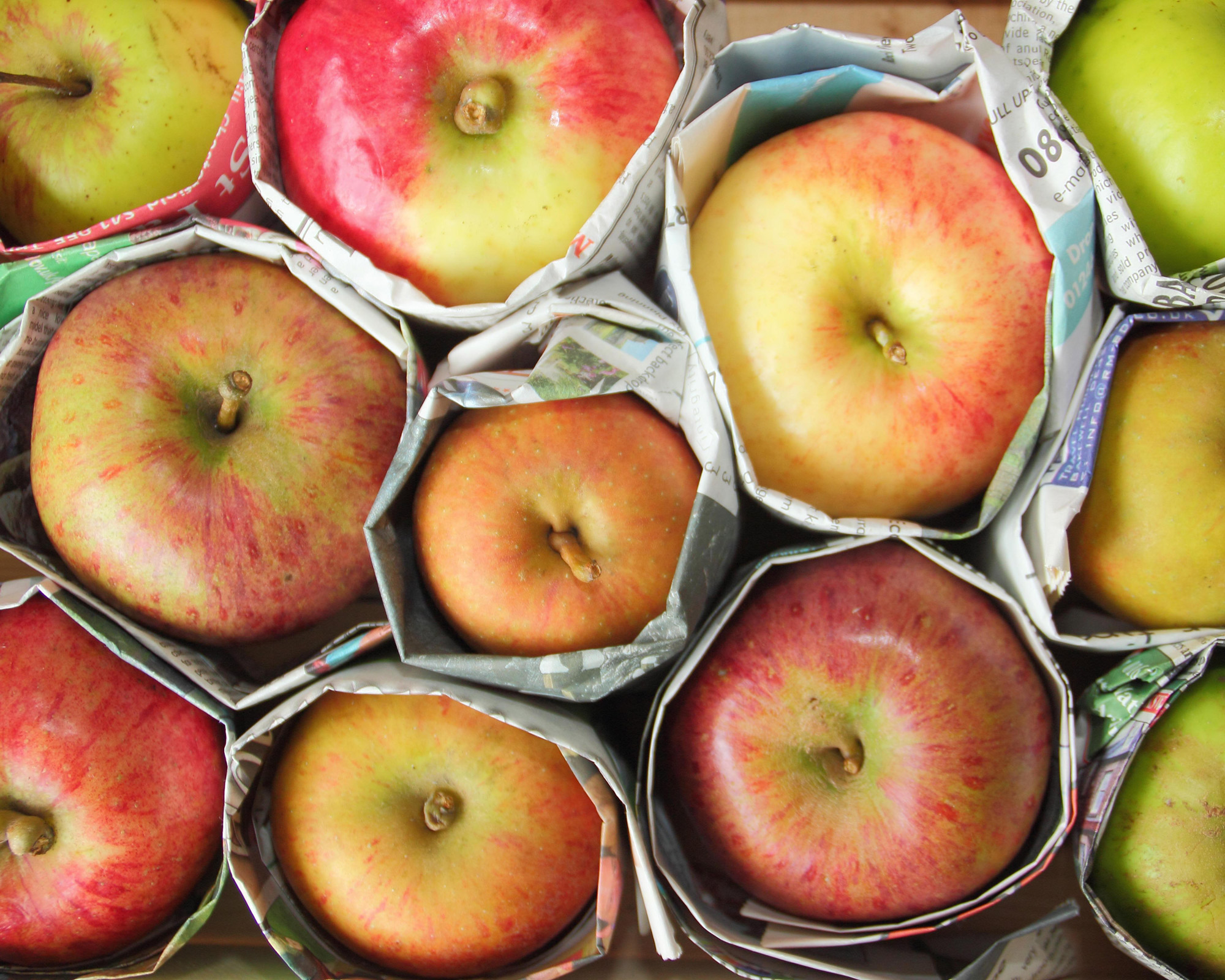
Keep only the best apples in storage and make sure that any spoils are put to good use in keeping visiting birds happy!

As assistant editor of Amateur Gardening magazine, Janey's gardening passion was fostered from an early age, when her amazing mum had her deadheading hydrangeas, mulching roses, and propagating strawberry plants from runners for school open days. She's also taken part in lots of conservation and rewilding projects for the RHS and TCV as a way of exploring her horticultural horizons.
